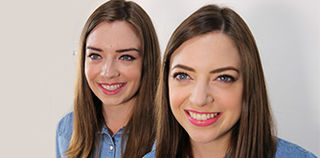Dementia
Who’s in the Mirror?
Infidelity, dementia, doubles, face transplants, gender fluidity, and identity
Posted March 25, 2016
“You’ve got another woman here”. He didn’t. He was 75. But my mother was convinced he had a girlfriend in the house. She was mid-way with the vascular dementia that had got her in her mid-60’s. It took about eight years for her to die. But why would my poor mother have accused him of having a girlfriend in the house? He was the most caring of men. One of my colleagues, a neurologist, suggested an answer. He asked me if there were mirrors in the room where the charge took place. There were. My colleague wondered if she might have seen herself in a mirror just before she delivered the wild accusation.
A mirror? Here is how the neurologist understood it. When my mother saw herself in that mirror, she may not have recognized herself. It’s true that by that point in her life she recognized very few of the people she had ever known. Her image, as far as she knew, was that of another person. It was a double, though she could not by then have used that word or understood the idea. All she saw was another woman that she did not recognize and that woman was in her bedroom. That was the girlfriend. My mother was the girlfriend and she was made so by the reflection in the mirror. She’d become someone else.

An interest in maternal dementia does not seem to have been one of the concerns of René Magritte, the Belgian surrealist painter. His mother drowned herself when the artist was just 13. But Magritte likes doubles and he likes to experiment with this image of not recognizing yourself in the mirror. Sometimes he seems to catch the spirit of what may happen to a person with dementia. In one of his paintings, of a man staring at his own image in a mirror, he uses the idea of the person in the mirror being both you and not you.
In Not to be Reproduced (1937) a man (apparently Magritte’s patron Edward James) looks in the mirror and he sees himself. But his image has crazily turned its back. It’s definitely the same person. By turning its back on him, the image in the mirror has assumed a life of its own. It’s become someone else, the equivalent of my father’s girlfriend. Magritte’s image is funny and poignant. Although my mother had no interest in Magritte, Not to be Reproduced catches the confusion that she may have suffered. Her misrecognition was the product of the brain damage incurred from all of those mini-strokes that precipitated her vascular dementia. The girlfriend in her room was certainly “not to be reproduced”.
There are many other versions of the confusion mirrors can cause between being both you and not you. Here’s a very famous one by the Renaissance artist, Caravaggio.

This is Narcissus. He’s staring hard at his own reflection in a pool. The Roman poet Ovid, writing 2,000 years ago, explains what’s going on here. He tells the mythological story of Narcissus in the third book of his Metamorphoses. Echo, an oread, fell in love with Narcissus. But he wanted nothing to do with her. She faded away from lovesickness till all that was left of her was an echoing voice. Before she’d completely vanished Echo prayed to Nemesis that Narcissus would suffer just like she’d done. He did. He spotted his own reflection in a pool in the forests on Mount Cithaeron. He’d never seen his own reflection before this. Mirrors hadn’t yet been invented. When Narcissus glimpsed himself in the water he was smitten. It was, as far as he was concerned, someone else and that person was the best thing he’d ever seen. He fell instantly in love. He couldn’t take his eyes off himself. Just like my mother the reflection that he was seeing was, as far as he knew, someone else altogether. The image never responded to Narcissus. When he reached his arms into the pool to embrace himself his vision vanished. Narcissus faded away like Echo and died absorbed in his own image.
There are real life modern versions of the confusions caused by mirror images. They can be as strange as the story of Narcissus. One of the most moving comes from Carmen Blandin Tarleton. After the attack, when she saw herself again, the person in the mirror she’d become was not Carmen Blandin Tarleton. “When I did regain enough eyesight to see myself in the mirror”, she explains, “it was difficult. I couldn’t see who I was before. Even my eye color had changed. [My face] was disturbing.” Carmen Tarleton’s husband had doused her with industrial strength alkali and she was left with burns across 80% of her body. In her disfigured state the face that she saw in the mirror “made little kids cry.”
Carmen Blandin Tarleton became one of the first people in the world to receive a full facial transplant. After the surgery to repair her face she still did not recognize herself. This time at least the image was better: “I wasn’t afraid or worried, given how disfigured I’d been before. It was a big relief to look in the mirror that first time. I looked good”. But she looked like someone else. She looked like her donor, the mother of Miranda Righter. Ms Tarleton says that transplant faces can change over time, but not hers. When she meets Miranda Righter, “Miranda still sees her mother in me.”
Mirroring can move from the serious to the faddish. “I couldn't get over her face and some of the expressions she would pull.” That’s from Niamh Geaney, 26, a student and TV presenter from Dublin, Ireland. “I would think … ‘Oh my God that's my face.’ ” Ms Geaney has developed a remarkable enthusiasm for searching out her mirror look-alikes after she found her first, Karen Branigan, living only an hour from her in Dublin. Since then Niamh Geaney has found two more.
She’s even had one of the doppelgängers DNA tested to see if they are related. They’re not. Or, better, they are, but they’re not. It’s that girlfriend in the mirror again. When Ms Geaney looks in the mirror she must wonder whether she’s looking at herself or one of her three doubles. This is like René Magritte on Anadrol.
It doesn’t end here. Niamh Geaney set up a Facebook page to cater for the perplexing interest in looking for your mirror images. She has over 360,000 Facebook followers. To cope with the boom, she has now set up a website, the fascinating “Twin Strangers”, that you can join for $3.95 and, by using it, look for your own personal mirror image. “We now have over three quarters of a million users on the site and ‘Twin Strangers’ are connecting through it every day,” explains Niamh. If Ovid’s Narcissus were still with us I am sure that he’d be one of “Twin Strangers” most active customers.
It’s easy to become flippant - believe me I’m not. It seems as if what you get in the mirror may not be what you’d expect and, oftentimes, not always what you want. It’s OK for Twin Strangers, though I haven’t read the follow-up reports on successful encounters. And I’m not thinking just about my mother here or other benighted and dissociative souls, or Magritte, or the beneficiaries of transplant technology. There are lots of other odd mirroring circumstances. I read a report today of a group of young people in Australia’s Sydney who see themselves as gender neutral, or gender fluid, as a boy one day and a girl the next. For Marita, Annie of Sydney’s mother, it means “that some days Annie is a girl, some days Annie is a boy and some days she's both.” Cady 18, also of Sydney and born a girl, explains “When I look into the mirror I see me, my identity, everything that I am made up of. Just as if a female would look in the mirror and see femininity, I look into the mirror and I just see androgynous.”
It’s strangely about identity, isn’t it. If you go back to my mother’s double, maybe you can see why. One recent US survey of over 1,000 people ranked Alzheimer’s disease as, after cancer, the second most feared of all illnesses (41% of people fear cancer to 31% for Alzheimer’s disease). What is it about dementia? It’s not dying with dementia but the idea of losing your identity in the way that my mother did that is so worrying. Most people build up a sense of self that’s partly based on distance (my distance from you) and memory (mine not yours) and even a faulty sense of how we look (I don’t look like you). To lose that in the mirror as my mother did is a type of “death”. And it’s a very humiliating one, in prospect at least. It feels, and I say no more than feels, that so much of what I’ve covered here is a means of confronting this fear. These doubles are all about a challenge to a sense of self that’s under threat from illness, misperception, physical damage, the existence of others too like us, sexual confusion and gender misalignment. Mirrors above all seem to make these things worse. But talking about these threats, even seeking them out seems to offer some sort of an antidote and solace.





